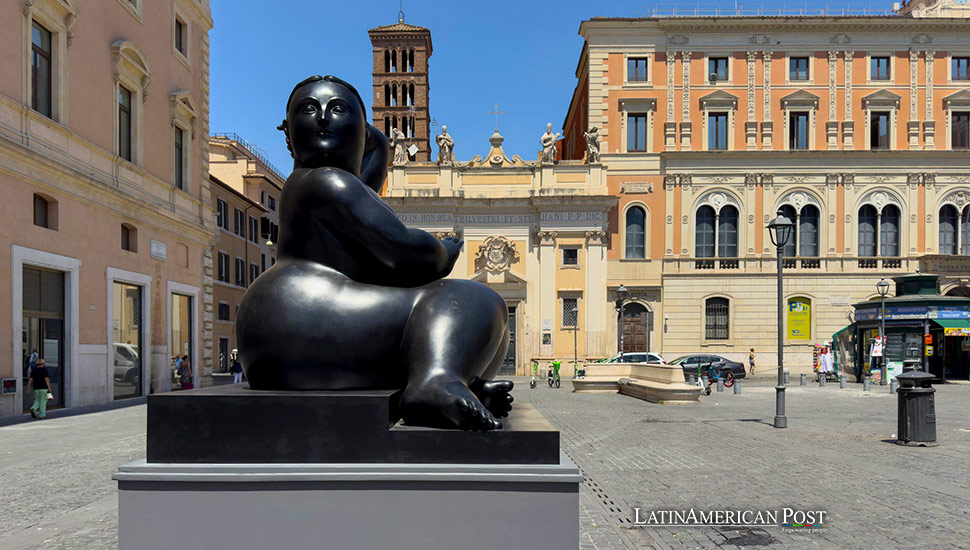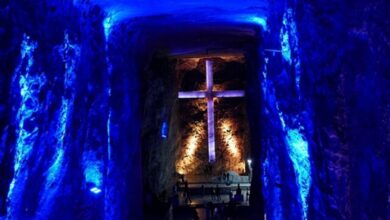Colombian Fernando Botero’s Monumental Art Enchants Rome in a Historic Exhibition

The iconic sculptures of Colombian artist Fernando Botero make their historic first appearance in Rome, captivating locals and tourists alike with a unique outdoor display in the city’s most emblematic squares.
For the first time, the grand world of Colombian artist Fernando Botero comes to life in Rome. From this Wednesday, pedestrians and tourists can marvel at eight of his most renowned sculptures. These pieces, strategically placed in iconic locations such as Piazza del Popolo and Piazza di Spagna, create an open-air gallery that the maestro himself would have been deeply moved by, according to his daughter Lina Botero, who also serves as the curator of this exceptional exhibit titled “Botero in Rome.” This monumental event marks a significant chapter in the art history of Rome and the world.
The decision to host this exhibition in Rome’s historic center is particularly poignant. Speaking with the news agency EFE, Lina Botero reflected on her father’s connection to these spaces: “It’s a huge privilege for us,” she noted, “but he would have been touched to see his works in such iconic Roman locations.” The sculptures, each a masterpiece of volumetric art, are set against the backdrop of Rome’s timeless architecture, drawing a fascinating parallel between Colombian modern art and Italian historical aesthetics.
Challenges and Triumphs of the Exhibition
The installation of the eight sculptures was a feat of “extreme complexity,” exacerbated by the numerous ongoing renovations throughout the Eternal City in preparation for the 2025 Jubilee. These artworks have journeyed here following “more than 25 exhibitions in other symbolic places like the Champs-Elysées in Paris,” Lina Botero recounted. The exhibition in Paris in 1992 marked the beginning of an “extraordinary journey” that took these sculptures to places such as Park Avenue in New York, Rodeo Drive in Los Angeles, Paseo de Recoletos in Madrid, Brandenburg Gate in Berlin, and even far-flung locales like Shanghai and Hong Kong. This global journey adds a layer of anticipation and excitement to the Rome exhibition.
The City of Rome has designed “a Roman stroll with Botero,” starting with his “Sleeping Venus” (1994) and “Reclining Woman” (2003) placed at the Terrace of the Pincio in Villa Borghese Park, offering a sublime view over Piazza del Popolo where “Adam and Eve” (1992) are showcased. The journey continues down the bustling Via del Corso to Largo Lombardi, adorned by “Horse with Bridles” (2009), while the voluminous “Cat” (1999) captivates visitors at Piazza di San Lorenzo in Lucina. Next, a “Seated Woman” (2003) surveys the crowd from Piazza di San Silvestro. These sculptures not only tell a story but also enhance the visual landscape of Rome, adding a new dimension to the city’s aesthetic appeal.
Botero’s Profound Connection to Italy
The culminating point of this homage is another “Seated Woman” from 1991, placed majestically at Piazza di Spagna, right beside the Spanish Embassy to the Holy See. “This is one of the most formidable walks in the city,” Miguel Gotor, Rome’s Cultural Councilor, said during the exhibit presentation, which will remain accessible to Romans, tourists, and the curious until October 1st.
These sculptures not only enhance the aesthetic landscape of Rome but also emphasize Botero’s special bond with Italy, which he considered his second homeland. This connection was deeply influenced by the Quattrocento painting of the Renaissance, which significantly impacted his artistic development. Lina Botero emotionally recounted to EFE how her father arrived in Madrid at 19 as “a poor young man,” spending days in the Prado Museum, copying works of immortal artists. His transformative moment came when he encountered a book image of a fresco by Piero della Francesca (1412-1492), a master of the Renaissance, which was an “electric shock, a lightning bolt that changed his life forever.” Botero’s work has left a profound and lasting impact on Italian culture and art.
Legacy and Impact
Deciding to shift his trajectory, Botero left for Italy with a friend on a motorcycle shortly after that to study in Florence. This pivotal move allowed him to “rationalize his innate tendency towards volume,” evident even in the watercolors he painted at 17 years old. His time in Florence was crucial in shaping his understanding and mastery of volumetric representation, making his work uniquely distinguishable from other historical artists.
Botero’s venture into sculpture began in 1973, and in the 1980s, he purchased a home in Pietrasanta, a small town in Tuscany known for its quarries and marble workers. Over the decades, Pietrasanta became a hub for renowned global artists, drawn by its artisanal heritage, which Botero deeply respected. Lina affirmed her father’s reverence for the artisans there, whose techniques were passed down through generations. This town, significant to Botero’s personal and professional life, was where he chose to have his ashes laid to rest alongside those of his wife and fellow artist, Sophia Vari, who passed away last September at the age of 91.
Also read: Darude’s “Sandstorm” Outshines Colombian Shakira’s Song as Copa América Anthem
The exhibition “Botero in Rome” not only commemorates Fernando Botero’s incredible journey but also reaffirms his enduring influence on and love for Italian culture and art. Through his expansive, volumetric style, Botero bridled continents and epochs.




